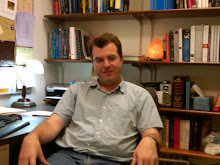I can't read anymore of Anna Karenina. I can't. I tried, and made it 100 pages, but it's so slow, and the day-to-day activities of these pampered rich people are so mundane, so boring, that I keep hoping some Communist revolutionaries will come along and send them to Siberia. I actually like the inner lives of these characters, but I hate their mundane activities, and I wish the story would move. I toughed it out for 120 pages and that was enough.
Sorry, Tolstoy. Maybe I'll try War and Peace one of these decades.
My next book is Academaze by friend-of-the-blog Sydney Phlox, aka Xykademiqz.
Tuesday, June 7, 2016
Monday, June 6, 2016
Amazingly, doing homework problems is a good way to learn physics material
I have graded my final exam and looked at correlations between homework scores and test scores. Besides looking at overall homework average and final exam score, I also look at the correlation between each midterm and the homework assignments with the material from that midterm. Some points to note:
Without further ado, the correlations:
- I give two types of homework. The first is a long problem set full of calculations every week. There are 9 of these in the quarter.
- I give 1-2 shorter assignments per week that are either warm-ups for the day’s lecture topics, reviews of the previous class session’s lecture topics, or reviews of the reading. There are 14 of these in the quarter.
- I drop the worst long homework and 2 worst short homeworks, so that there’s no penalty for having one particularly bad week during the quarter.
- Each midterm covers 3 problem sets and 4 short assignments. Half of the final exam was on the last 3 problem sets and the last 6 short assignments, and the other half was a review of topics from the first two midterms.
- I was able to break out the final exam problems related to problem sets 7-9, and correlate those final exam problems with the relevant problem sets and relevant short homeworks.
- I also computed correlations between the total final exam score and the homework averages for the quarter (with the lowest dropped to remove penalties for a bad week).
- There are 16 students who took all 3 tests.
Without further ado, the correlations:
| Corresponding exam or section | Final exam score | |
| Short HW 1-4 | 0.46 | |
| Problem sets 1-3 | 0.46 | |
| Short HW 5-8 | 0.45 | |
| Problem sets 4-6 | 0.53 | |
| Short HW 9-14 | 0.46 | |
| Problem sets 7-9 | 0.63 | |
| All Short HW | 0.78 | |
| All problem sets | 0.81 |
Not surprisingly, the correlation between one test and a small number of assignments is weaker than the correlation of the final with a larger number of assignments, because when I average 9 assignments instead of 3 some noise averages out.
The fact that the homework (which is not timed) is so strongly correlated with the tests (which are timed) suggests that the homework and tests are measuring the same thing, in spite of possible issues of test anxiety, etc. Also, while the correlations between the subsets of homework and relevant exam problems are weaker than the correlation of the average homework score with the final exam, the correlations are quite close to each other, suggesting that all of the tests are similarly representative of the homework.
Most importantly, it appears that people who work hard at homework problems do well in the class overall. Who knew that doing homework is the best way to learn the material?
The voice of the opposition
I was interviewed to provide a critical perspective for an article about Eric Mazur in the Chronicle of Higher Education (paywall). There are a few quotes from a short interview, a link to an article I published in the Chronicle a few years ago, and a quote from a blog post. I'm basically quoted as saying that if people take notes and organize their thoughts they can learn, that expert perspectives should be important and held up alongside group activities and whatnot, and that what may have revolutionary 25 years ago is now mainstream to the point of being nearly obligatory.
Subscribe to:
Comments (Atom)


